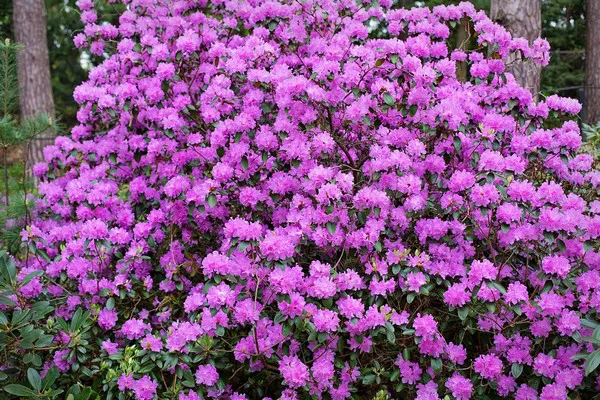Monstera plants, known for their striking foliage and unique growth patterns, have surged in popularity among plant enthusiasts worldwide. While the standard Monstera deliciosa is widely cultivated and readily available, certain rare varieties of Monstera captivate collectors with their distinctive features and elusive nature. In this article, we delve into the world of rare Monstera plants, exploring their characteristics, origins, and the fervent pursuit of enthusiasts to acquire these botanical treasures.
Introduction to Monstera Plants
Monstera plants, members of the Araceae family, are native to tropical regions of Central and South America. Their iconic foliage, characterized by broad, glossy leaves adorned with intricate perforations or fenestrations, adds a touch of exotic elegance to any indoor space. Monstera plants are revered not only for their aesthetic appeal but also for their resilience and adaptability, making them popular choices for both novice and experienced plant owners.
The standard Monstera deliciosa, often referred to as the Swiss cheese plant, remains a perennial favorite among indoor gardeners, prized for its robust growth habit and iconic leaf structure. However, beyond the common Monstera varieties found in nurseries and garden centers, a world of rare and exotic Monstera species and cultivars awaits exploration by passionate collectors and enthusiasts.
What Makes a Monstera Rare?
Rare Monstera plants are distinguished by their unique characteristics, which set them apart from the standard varieties commonly available in cultivation. These characteristics may include unusual leaf shapes, variegation patterns, or growth habits that deviate from the norm. Additionally, rarity may be influenced by factors such as limited distribution in their native habitats, low propagation rates, or exclusive availability through specialized nurseries or collectors.
For plant enthusiasts, the allure of rare Monstera varieties lies in their distinctiveness and scarcity, as well as the thrill of discovering and cultivating these botanical gems. While rare Monstera plants may command higher prices and require more specialized care, the rewards of nurturing these unique specimens can be both gratifying and fulfilling for dedicated collectors.
Exploring Rare Monstera Varieties
1. Monstera obliqua
Monstera obliqua, often referred to as the “Swiss cheese plant’s elusive cousin,” is renowned for its delicate, fenestrated leaves and slender, vining stems. Unlike its more common counterpart, Monstera deliciosa, Monstera obliqua features finer fenestrations and a more intricate leaf structure, giving it a distinctly elegant appearance.
Native to the rainforests of Central and South America, Monstera obliqua is a rare and elusive species coveted by plant collectors for its ethereal beauty and scarcity in cultivation. Due to its delicate nature and challenging cultivation requirements, Monstera obliqua remains a prized possession among enthusiasts willing to invest time and effort in its care.
2. Monstera adansonii ‘Variegata’
Monstera adansonii ‘Variegata,’ also known as the Variegated Swiss cheese vine, is a rare and coveted cultivar prized for its striking variegated foliage. Unlike the standard Monstera adansonii, which features solid green leaves with characteristic fenestrations, the Variegated variety exhibits patches of creamy white or yellow variegation interspersed with green.
This unique variegation pattern adds a touch of whimsy and elegance to the plant’s appearance, making it a sought-after addition to any indoor plant collection. However, due to its rarity and the challenges associated with maintaining variegated plants, Monstera adansonii ‘Variegata’ commands premium prices and requires careful attention to lighting and environmental conditions to thrive.
3. Monstera karstenianum
Monstera karstenianum, also known as the “Peru form,” is a rare and distinctive species prized for its elongated, lance-shaped leaves and intricate fenestrations. Unlike the more common Monstera deliciosa, which features broader, heart-shaped leaves, Monstera karstenianum’s foliage is characterized by its slender, pointed shape and delicate perforations.
Native to the rainforests of Peru, Monstera karstenianum is a relatively rare find in cultivation, with limited availability through specialized nurseries or botanical gardens. Its unique leaf structure and elegant growth habit make it a coveted addition to any plant collection, appealing to collectors seeking unusual and exotic specimens.
4. Monstera borsigiana ‘Albo Variegata’
Monstera borsigiana ‘Albo Variegata,’ also known as the Variegated Monstera deliciosa, is a rare and highly sought-after cultivar prized for its stunning variegated foliage. Unlike the standard Monstera deliciosa, which features solid green leaves with characteristic fenestrations, the Variegated variety exhibits patches of creamy white or yellow variegation interspersed with green.
This striking variegation pattern adds a touch of drama and elegance to the plant’s appearance, making it a prized addition to any indoor plant collection. However, due to its rarity and the challenges associated with maintaining variegated plants, Monstera borsigiana ‘Albo Variegata’ commands premium prices and requires careful attention to lighting and environmental conditions to thrive.
5. Monstera pinnatipartita
Monstera pinnatipartita is a rare and distinctive species characterized by its deeply lobed, fern-like leaves and intricate fenestrations. Unlike the more common Monstera varieties, which feature broad, heart-shaped leaves, Monstera pinnatipartita’s foliage is highly dissected, giving it a uniquely elegant appearance reminiscent of tropical ferns.
Native to the rainforests of Central and South America, Monstera pinnatipartita is a relatively rare find in cultivation, with limited availability through specialized nurseries or botanical gardens. Its graceful growth habit and delicate leaf structure make it a coveted addition to any plant collection, appealing to enthusiasts seeking unusual and exotic specimens.
Cultivating Rare Monstera Plants
Cultivating rare Monstera plants requires careful attention to their specific environmental and cultural needs, as well as patience and dedication to their care. While rare Monstera varieties may present unique challenges compared to their more common counterparts, the rewards of successfully nurturing these botanical treasures can be immensely satisfying for dedicated collectors.
Light
Most rare Monstera varieties thrive in bright, indirect light, with protection from direct sunlight, which can scorch their delicate foliage. Placing rare Monstera plants near east or west-facing windows, where they can receive gentle morning or afternoon sunlight, is ideal for promoting healthy growth and vibrant foliage.
Watering
Rare Monstera plants prefer consistently moist, well-draining soil, with regular watering to maintain adequate moisture levels. However, it is essential to avoid overwatering, as excessive moisture can lead to root rot and other moisture-related issues. Allowing the soil to dry out slightly between waterings can help prevent waterlogged conditions and promote healthy root development.
Humidity
Many rare Monstera varieties thrive in humid environments, reminiscent of their native tropical habitats. Providing supplemental humidity through methods such as misting, humidifiers, or pebble trays can help create a humid microclimate around the plants, reducing the risk of leaf desiccation and promoting optimal growth.
Temperature
Rare Monstera plants prefer warm, tropical temperatures ranging from 65°F to 80°F (18°C to 27°C) year-round. Avoid exposing them to sudden temperature fluctuations or drafts, as these can stress the plants and compromise their overall health and vigor.
Fertilization
Feeding rare Monstera plants with a balanced, water-soluble fertilizer formulated for foliage plants can provide essential nutrients to support healthy growth and development. Dilute the fertilizer to half or quarter strength and apply it every 4-6 weeks during the growing season, reducing frequency during the winter months when growth slows.
See Also: The Largest Orchid In The World
Conclusion
In conclusion, rare Monstera plants represent a captivating and elusive subset of the broader Monstera genus, captivating enthusiasts with their unique characteristics and exotic allure. From delicate fenestrations to striking variegation patterns, rare Monstera varieties offer a glimpse into the rich diversity of tropical flora, inspiring collectors to seek out these botanical treasures and cultivate them with care and dedication.
While rare Monstera plants may present challenges in terms of availability, cultivation, and maintenance, the rewards of nurturing these botanical gems can be immensely gratifying for passionate collectors. Whether it’s the ethereal beauty of Monstera obliqua or the dramatic variegation of Monstera borsigiana ‘Albo Variegata,’ each rare Monstera variety holds its own unique appeal, enriching indoor spaces with their exotic foliage and vibrant presence.
As interest in rare Monstera plants continues to grow, driven by a fervent community of collectors and enthusiasts, the quest to acquire and cultivate these botanical treasures remains an ongoing adventure filled with discovery, exploration, and appreciation for the extraordinary diversity of the natural world.
You Might Be Interested In:


























